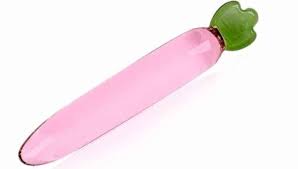Now it's time to fine-tune your next Shortboards! With the help of our volume calculator you should find a shortboard, fish or hybrid to take your surf skills to the next level!
A surfboard must provide enough buoyancy for you to paddle comfortably, launch waves and land safely on the board during take-off. A surfboard which is too small won't be fun if you suddenly only get two waves per surf session. Conversely, the surfboard shouldn't be too big for you. After all, you want to reach the next surf level, practice turns or learn the duck dive.
A very good indicator which board matches your surfing level, your weight, your surfing experience and your surfing fitness is the volume of the board measured in liters.
You go surfing once or twice a year and spend a total of two to three weeks in the water. In general you have a good fitness and are also active in sports at home. Sport alone, however, does not completely fill your life and you enjoy spending an afternoon on the beach in the sun.
You regularly go on surf trips and spend several weeks in the water. Surfing is absolutely in the foreground on the trips. At home you do sports several times a week and the sport serves as a balance in your life. You go swimming or paddling to prepare for your next surf trip.
You live by the sea and surf regularly. Surfing is an integral part of your life. If there are no waves, you can train in the gym or swimming pool.
For beginners the Mini Malibu and Funboards are the right choice. The surfboards are very easy to paddle and glide well when paddling a wave. The boards offer a lot of stability when taking off and surfing the first waves - perfect for beginners!
For advanced surfers the Hybrid Surfboards, Fish or Egg Shapes fit very well! The boards with a length between 5.2 and 6.9 are much shorter than a Mini Malibu or Funshape. The shape is characterized by relatively wide boards and a nose with a lot of volume. Thus the Hybrids, Fish and Egg Shapes combine a lot of volume in a relatively short surfboard. This makes the boards very attractive for advanced surfers who want a shorter board, but don't want to forego the paddle advantages of a large board. Conversely, fish and egg shapes are a great alternative for good surfers on days with small and weak waves.
The boards are ideal as a step from the Mini Malibu to the next shorter board or as a step-up on days with smaller, weak waves. The surfboards are therefore suitable for advanced surfers as well as for professionals!
Shortboards are the surfboards for experienced and very good surfers. The boards are relatively light and have a small volume. This makes the boards very manoeuvrable and agile - for radical turns on the wave the shortboards are the right choice!
However, the short boards require a lot of surfing experience, paddle power and fitness. No surfer gets past funboards and fish shapes during his surfing career before he can surf a shortboard.
Longboards represent a different side of surfing: Smoother Surfstyle of a longboard with round movements and other manoeuvres like cross-steps or slope-fives or hang-tens!
With a length of 9 feet or more, the longboards have a lot of volume. However, this does not mean that the boards are also suitable for beginners. The boards are difficult to move because of the large mass and paddling out to the line up is a big challenge, which makes longboards not beginners friendly.
The softboards are ideal for the first days in the water. Soft boards significantly reduce the risk of injury. Equipped with flexible fins there is a lower risk of injury to the fins.
Today you have a plethora of surfboard shapes to choose from, so much so that it's hard to know what differentiates one from the next.
With so many variables, and so many different board shapes to dissect, it's no wonder surfers don't know which shape to choose, let alone why.
This ultimate guide to surfboard shapes hopes to change all that, give you that little extra insight, and clear things up once and for all.
So if you're ready to go deep into all the different styles of surfboard people are riding and why, keep reading, as you're in for a treat.
There are two types of Fish surfboard shapes, the new school version (as pictured above), and the old school version which we'll get to later in this post.
Spyder Surfboard reviewsFish surfboards are designed for surfing small waves and as such are wider at the nose and tail than high performance shortboards.
This extra width provides more surface area, allowing the board to plane and glide better in small waves, it makes them super fast too.
Fish surfboards are best surfed in weaker, flatter style waves as they hold their speed so well, however they have their limitations especially when the waves get bigger and steeper.
This swallow tail set up allows the board to carry extra width into the tail for buoyancy, volume, and glide, yet allows the board to pivot from rail to rail too for more progressive surfing.
These boards are built like a Formula 1 race car for the waves, and it's here where most surfboard evolution happens.
Typically the shape of a high performance surfboard will be pulled in at the nose and tail to allow for sharper, tighter turns in the pocket.
You'll also find harder, sharper, less forgiving rails at the tail of the surfboard to allow the surfer to really put the board on edge as well.
You'll also find harder, sharper, less forgiving rails at the tail of the surfboard to allow the surfer to really put the board on edge as well.
And, just like a Formula 1 car needs to be driven at maximum speed for the downforce to take effect, tyres to heat up, etc. to fully perform at its best, the same goes for high performance shortboards too.









.jpg)
